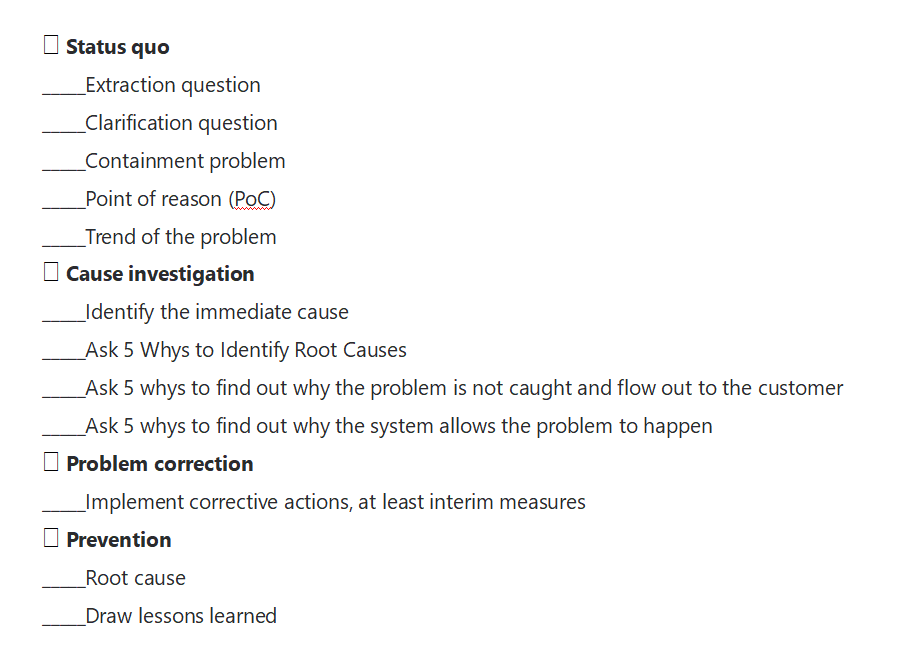(2) Cause investigation:
① Identifying and confirming the direct cause of the abnormal phenomenon: If the cause is visible, verify it. If the cause is invisible, consider potential causes and verify the most likely one. Confirm the direct cause based on facts.
② Using the “Five Whys” investigation method to establish a cause-and-effect chain leading to the root cause: Ask: Will addressing the direct cause prevent recurrence? If not, can I discover the next-level cause? If not, what do I suspect the next-level cause to be? How can I verify and confirm the existence of the next-level cause? Will addressing this level of cause prevent recurrence? If not, continue asking “why” until the root cause is found. Stop at the level where action is necessary to prevent recurrence and ask: Have I found the root cause of the problem? Can I prevent recurrence by addressing this cause? Does this cause link to the problem through a cause-and-effect chain based on facts? Has this chain passed the “therefore” test? If I ask “why” again, will it lead to another problem? Confirm that you have used the “Five Whys” investigation method to answer these questions.
Why do we have this problem? Why does the problem reach the customer? Why does our system allow the problem to occur?
(3) Problem correction involves using temporary measures to address abnormal occurrences until the underlying root cause can be addressed. Question: Will temporary measures stop the problem until permanent corrective measures can be implemented? Implement corrective measures to address the root cause and prevent recurrence. Question: Will corrective measures prevent the problem from occurring? Track and verify the results. Question: Is the solution effective? How can I confirm? Why use the 5 Whys analysis checklist to confirm that you have followed the problem-solving model when completing the problem-solving process.
Post time: Jun-09-2023









